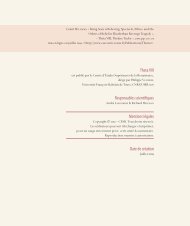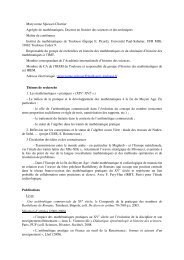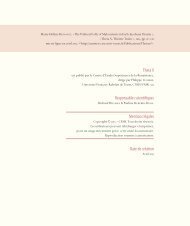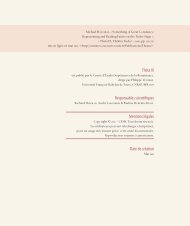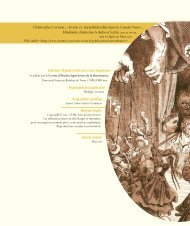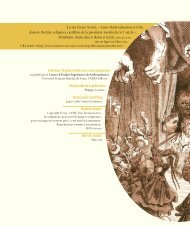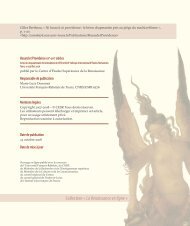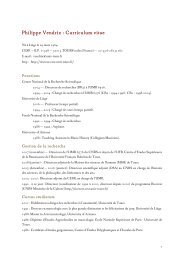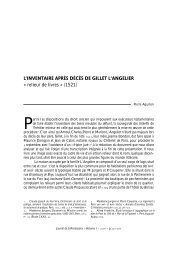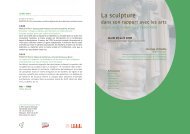Theta IX Responsables scientifiques Mentions légales Date de ...
Theta IX Responsables scientifiques Mentions légales Date de ...
Theta IX Responsables scientifiques Mentions légales Date de ...
You also want an ePaper? Increase the reach of your titles
YUMPU automatically turns print PDFs into web optimized ePapers that Google loves.
goo<strong>de</strong> eastate” (l. ). Before the action ever begins, the Prologue explains tothe spectators:Marye our Soveraigne and Quene. . . . . . . . . . . . . . . . . . . .She is oure most wise and most worthie NemesisOf whom our plaie meneth tamen<strong>de</strong> that is amysse. (ll. 4-4)Mary I, newly crowned and sweeping away the corruption of her brother Edward’sgovernment, is thus explicitly i<strong>de</strong>ntified with the figure who, we are told, “hathepowre from god<strong>de</strong> all practise to repeale / which might bring Annoyaunce toladie comonweale” (ll. 8-8). Her authority is over the constituent parts of thecommonweal: “tys hir powre to forbid<strong>de</strong> and punishe in all eastates / all presumptuousimmo<strong>de</strong>rate attemptates” (ll. -). But the stage presence of Nemesis isperhaps even more revealing of the nature and scope of her power than are theseexplanations. She is ceremonially brought in by the Four Daughters of God inthe final scene of the play to judge the Vices and <strong>de</strong>liver them to restitution orpunishment. The <strong>de</strong>scriptions that prece<strong>de</strong> her entrance make it clear that she iscostumed as a highly emblematic personification:hir cognisaunce therefore is a whele and wings to flye,in token hir rewle exten<strong>de</strong>th ferre and nie.A rud<strong>de</strong>r eke she bearethe in hyr other han<strong>de</strong>,as directrie of all thinges in everye Lan<strong>de</strong>. (ll. -)This suggests a visually dominating and elaborate figure, but a static one unlikelyto engage in kinetic action. In fact, we are even alerted to her choreographedstance and gesture, which reinforce the impression of an almost otherworldly,greater-than-human quality: “than pranketh she hir elbowse owte vn<strong>de</strong>r hirsi<strong>de</strong>, / to keape backe the headie and to temper theire pri<strong>de</strong>” (ll. -). Throughthe i<strong>de</strong>ntification of Mary with Nemesis, monarchy is seen to function as the <strong>de</strong>usex machina who emerges to right wrongs and to distribute absolute judgementsanctioned by—in<strong>de</strong>ed almost i<strong>de</strong>ntified with—the power of God himself.Monarchy is a far more contested notion in the Thrie Estaitis. As GregWalker has pointed out (pp. 4-43), the play abounds with figures of kingship:King Humanitie and Divine Correction are both characterised as kings, the PoorMan usurps the image of kingship by climbing into the empty throne, and heand John the Common-Weill himself frequently appropriate the role with theirDramatising I<strong>de</strong>ology …theta iX 105



